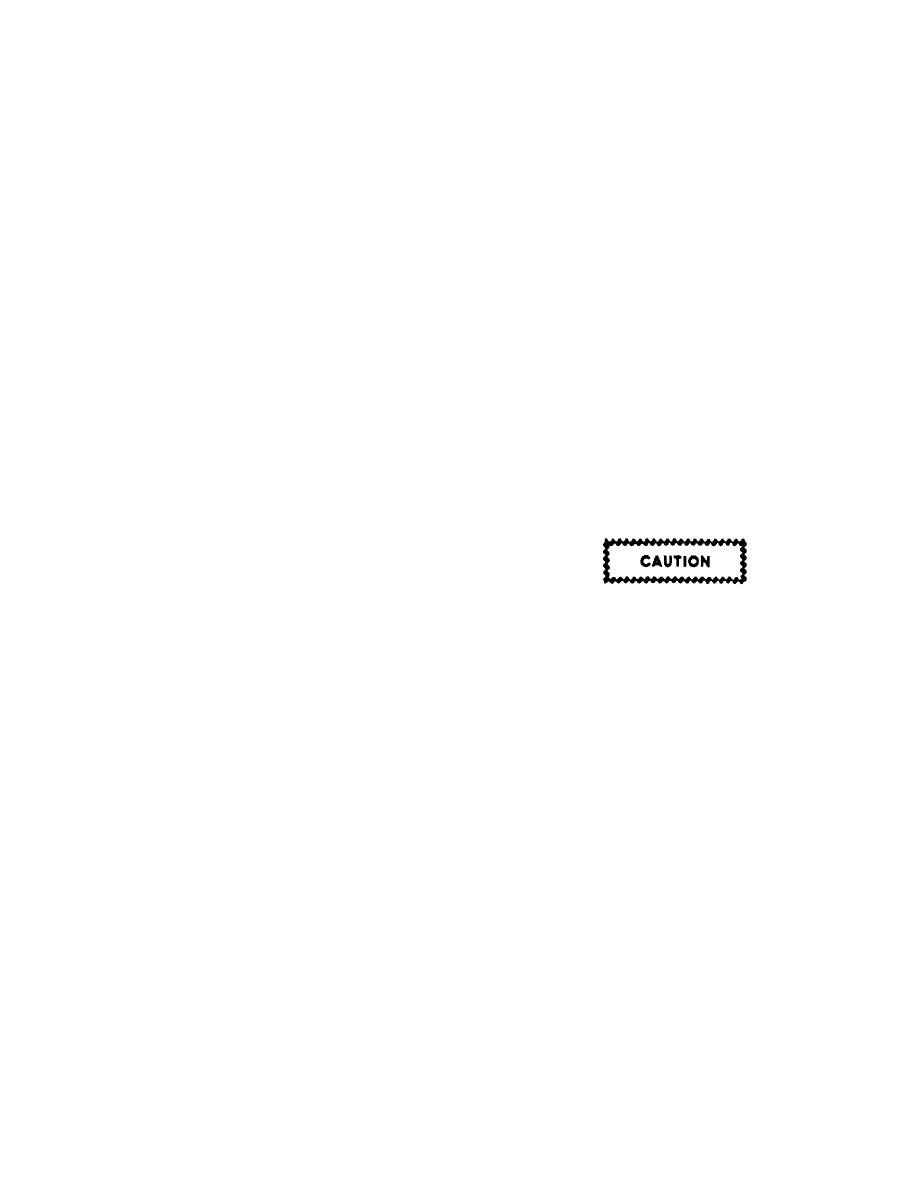 |
|||
|
|
|||
|
Page Title:
Section III. PREPARATION FOR USE |
|
||
| ||||||||||
|
|
 SECTION III
PREPARATION FOR USE
3-1.
GENERAL. When the fork lift truck has reached
d. Inspect the lift chain and carriage assembly for
its final destination, a complete check is necessary to
damage.
determine if the truck running gear, hydraulic hoist and
lift system and all attached equipment is in condition for
e. Inspect the controls and instruments for breaks,
proper operation. This section describes the procedures
cracks, bends, or other defects.
to follow when receiving and preparing a new fork lift
truck for use.
f. Visually inspect all other components of the
vehicle for obvious damage and discrepancies such as
3-2.
REMOVAL OF PRESERVATIVES.
broken, cracked, dented or missing parts, loose
fasteners, dirt and other physical damage.
a. Remove tape, paper, or other packing. Use
extreme care when unpacking and installing separately
g. Inspect and service the specific components and
packaged components.
systems of the vehicle as indicated below in preparation
for use.
b. Remove with a drycleaning solvent preservative
compound from exposed metal surfaces. Because this
(1) Battery. Be certain negative and positive
compound is not a lubricant, take special care to see that
cables of battery are securely fastened.
it is completely removed from all wearing surfaces.
(2) Fuel System. Fill the fuel tank, located
c. If any component or system contains
inside the right side engine compartment door, with clean
preservative oil, drain the oil from it. Fill with proper
regular grade gasoline of 70 octane rating or higher. Tile
lubricant as indicated in lubrication chart.
engine will operate on higher grades of automotive
gasoline, but does not require them.
3-3.
INSTALLATION OF SEPARATELY PACKED
COMPONENTS.
a. Forks. Pull up ring catch on fork, position fork in
desired location on carriage and release ring catch to
Do not use aromatic blend aviation
lock fork on carriage. Repeat to install other fork.
gasoline. Components of the fuel
system are not designed for aromatic
b. Battery. The battery is a 12 volt storage type,
fuels and damage to the system will
some shipped dry and some charged. The electrolyte is
probably result.
packed in a separate container. Fill the battery with
electrolyte to the level 3/8 inch above the plates. Check
(3) Cooling System. Check that the radiator
specific gravity of electrolyte with a battery hydrometer to
drain cock at the bottom of the radiator and cylinder
learn if battery is sufficiently charged for use.
If
block drain cock are closed. Fill cooling system with
temperature corrected specific gravity is less than 1.225
water, or, if below freezing temperatures are expected,
(half charged), recharge battery from an external source.
with a mixture of ethylene glycol, inhibited, meeting the
Full charge is indicated by a reading of 1.260 to 1.280.
requirements of Federal Specification O-A-548A in
proportions to provide protection to the lowest expected
3-4.
PRELIMINARY INSPECTION.
temperature.
NOTE
a. Inspect the packing list for missing components.
If extreme cold is expected, fill the
cooling system (after complete
b. Inspect exterior surfaces for broken or dented
draining of water) with Arctic type
parts, and for damaged painted surfaces.
antifreeze meeting the requirements
of specification MILC-11755. This will
c. Inspect visible wiring and hydraulic lines for cuts,
protect the cooling system against
breaks, or other damage.
frost damage to -65 Deg F. Start the
engine and permit it to reach
14
|
|
Privacy Statement - Press Release - Copyright Information. - Contact Us |